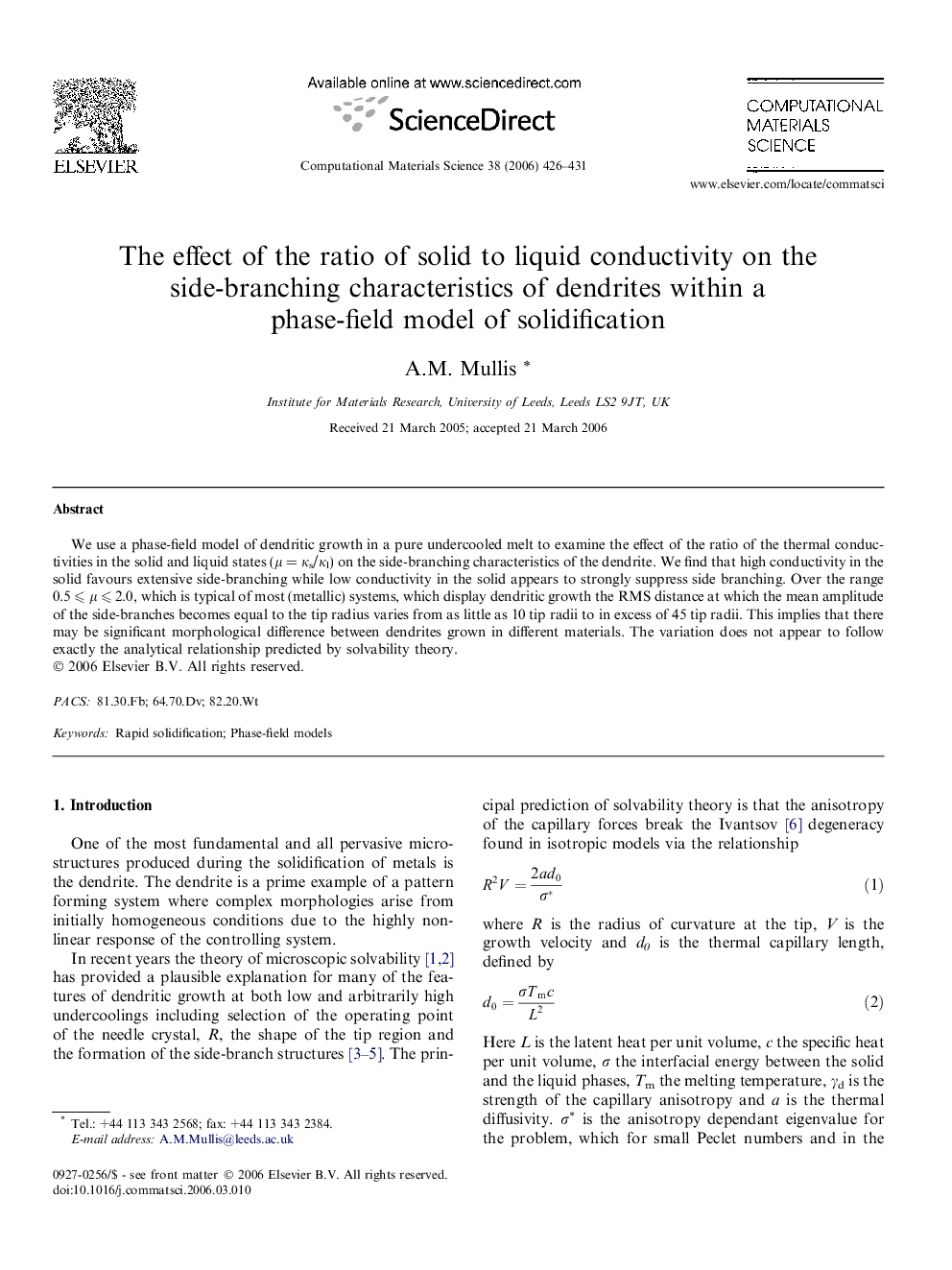| Article ID | Journal | Published Year | Pages | File Type |
|---|---|---|---|---|
| 1564006 | Computational Materials Science | 2006 | 6 Pages |
Abstract
We use a phase-field model of dendritic growth in a pure undercooled melt to examine the effect of the ratio of the thermal conductivities in the solid and liquid states (μ = κs/κl) on the side-branching characteristics of the dendrite. We find that high conductivity in the solid favours extensive side-branching while low conductivity in the solid appears to strongly suppress side branching. Over the range 0.5 ⩽ μ ⩽ 2.0, which is typical of most (metallic) systems, which display dendritic growth the RMS distance at which the mean amplitude of the side-branches becomes equal to the tip radius varies from as little as 10 tip radii to in excess of 45 tip radii. This implies that there may be significant morphological difference between dendrites grown in different materials. The variation does not appear to follow exactly the analytical relationship predicted by solvability theory.
Related Topics
Physical Sciences and Engineering
Engineering
Computational Mechanics
Authors
A.M. Mullis,
